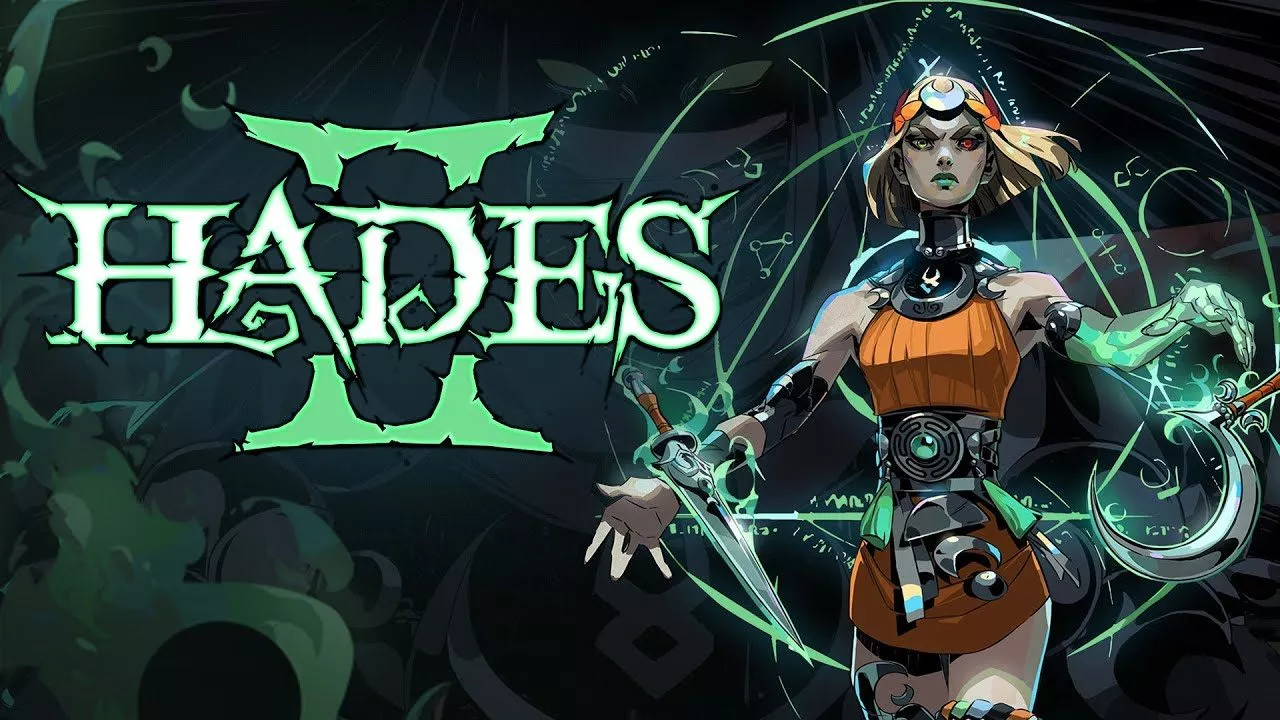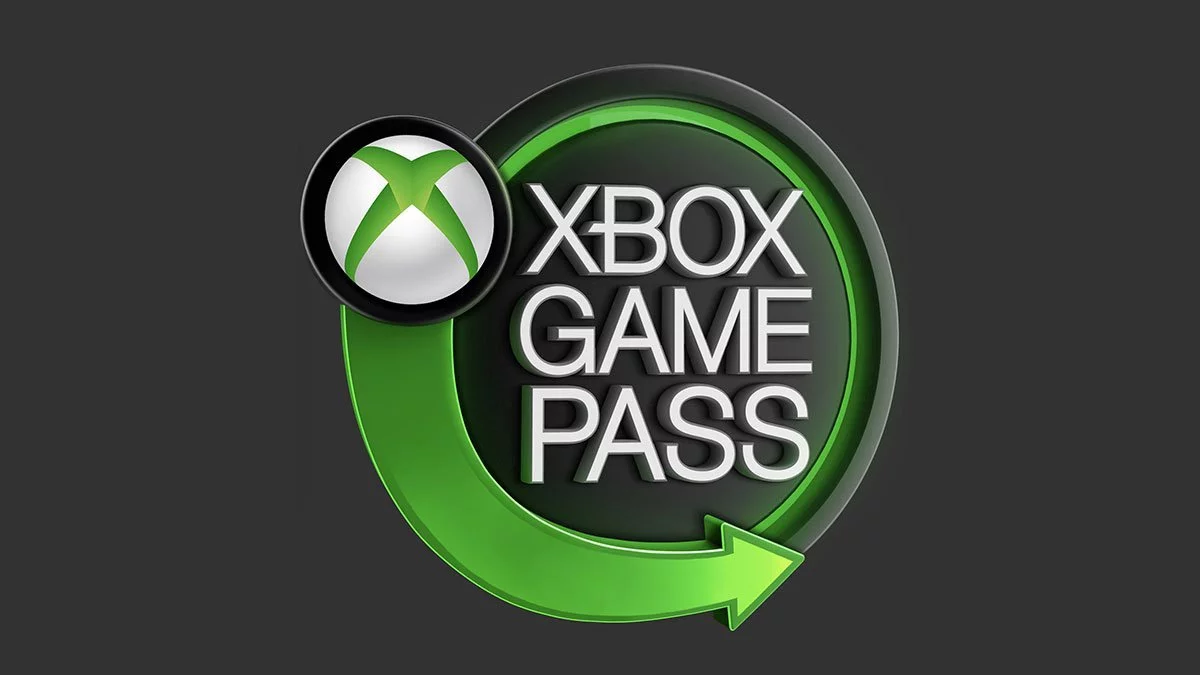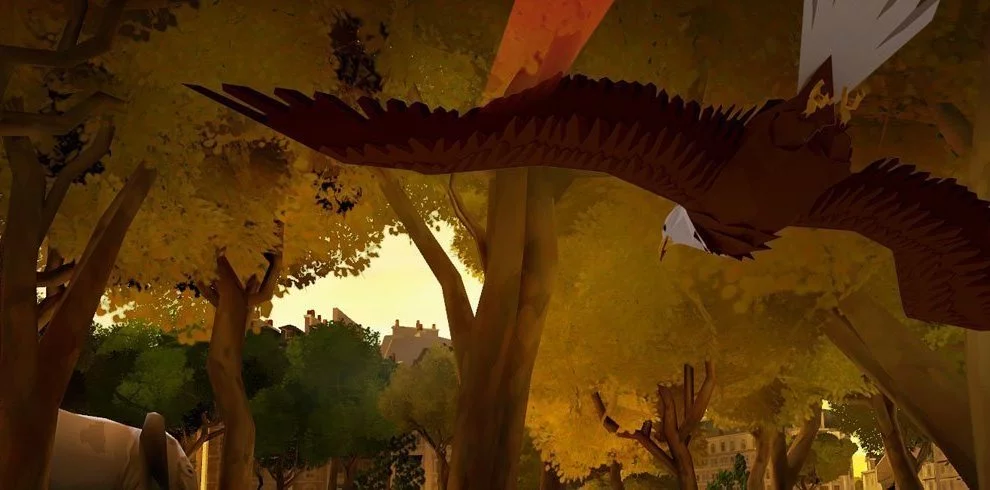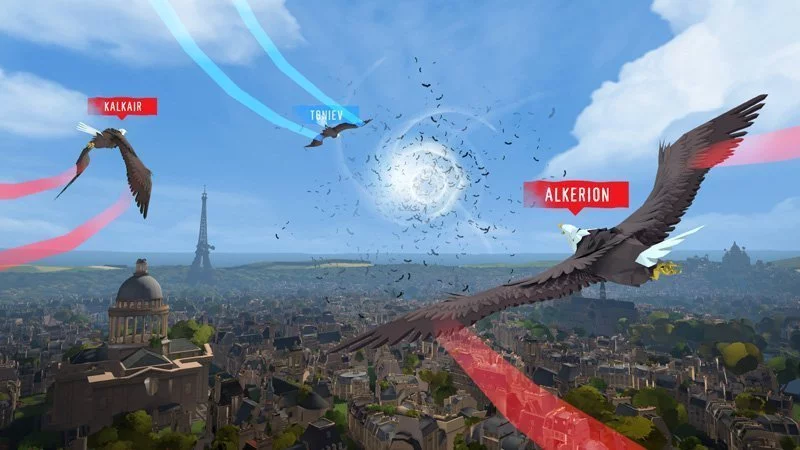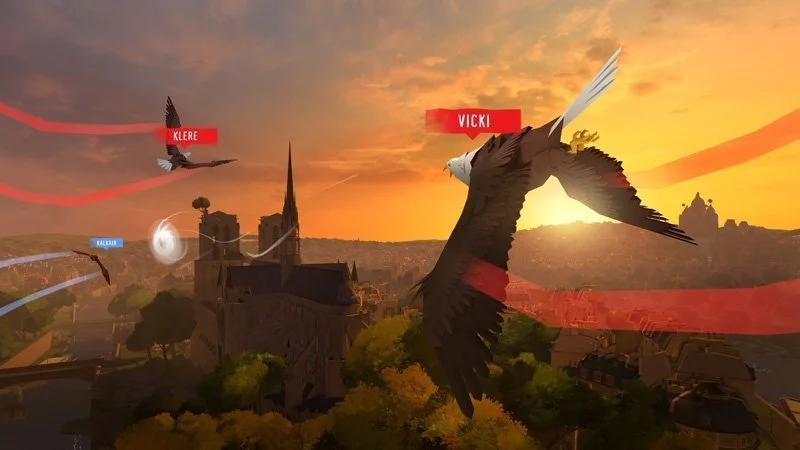Eagle Flight, the virtual reality exclusive from Ubisoft Montreal, will be one of the most popular of the 50 games available in the PlayStation VR launch period for its accessibility. It’s not the Wii Sports of the technology – no single game is going to be that successful, by virtue of VR being a personal, rather than a social, experience (unless you own several headsets) – but it might be the Kinect Sports or NintendoLand; the game that makes everyone, from hardcore gamers to grandmas unfamiliar with a controller, comfortable enough to look foolish in front of family and friends.
Also coming to PC with Oculus Rift and HTC Vive, Eagle Flight is set in a vibrant, almost cel-shaded, Paris 50 years after the extinction of humans, where wildlife have the remains of the city to themselves.
It’s an eminently simple concept that demonstrates the core pillars of VR. It still uses a controller, but only the triggers to control speeding up and slowing down. Moving your head and looking around the world controls navigation. Glancing left or right slowly shifts your trajectory, while a sharp turn requires your head to quickly jolt in either direction, almost touching your ear to your shoulder.
The same technique controls ascending and suddenly rushing towards the ground at blistering speed, which having tried first-gen Oculus and feeling terribly nauseous, I was hesitant to do; I’m happy to report consumer virtual reality has overcome those sickening issues, and poses no issues for sudden changes of direction.
Having grasped the intricacies of maneuvering between buildings and trees using nothing but head-tracking, Eagle Flight is confident in the precision of its controls. Playing a 2v2 capture the flag mode, we had to swoop towards the target, located near-as-makes-no-difference on the ground, before an enemy player could grab it and return it to the checkpoint. After avoiding trees and perilous obstacles to grab the sucker, my initial instinct was to ascend to the skies and cruise to the goal at altitude. However, that made me too vulnerable to enemy attacks, using a screech blast.
Success demanded flying tight towards the gorgeous Parisian buildings, weaving between the ancient architecture and throwing off enemy pursuit with sudden, unexpected turns. Holding the left trigger – and remembering you have a controller – enables quick 90 and 180-degree turns, as if you’ve pulled the handbrake, and is the easiest means to evade a tailing eagle.
There’s also a single-player mode, though I wasn’t able to try it, which will resonate more as an example of virtual reality to the curious but uninformed. It has you completing races by flying through rings, a staple of flight gameplay, but you’ve never experienced it quite like this. Whereas multiplayer is a little more limited as an introductory game – you’re never going to have 4 or 6 VR headsets in a room, and it won’t be the same online – single-player Eagle Flight could be the mode everyone wants to have a go at this Christmas.
That is where Eagle Flight fits within the grand VR experiment. It’s been a trial game for Ubisoft Montreal to learn the technology, and it’ll be an opportunity for players to share their fancy new headset with friends that haven’t tried one. PlayStation has promised an astonishing 50 titles for PlayStation VR during the launch period, but it may be less than meets the eye. It’s not 50 brand new games, but rather 50 VR experiences.
I’m glad there will be VR specific missions added to games like Star Wars Battlefront and Final Fantasy XV, giving early adopters additional content to play on their $550 headsets, without needing to buy full games. There are also indie games like Farpoint, a first person shooter that uses the PS VR Aim gun controller, that deserves credit for taking a risk by fully committing to VR so early. Major publishers have taken three approaches while they wait to see how consumers react. We’ll see VR versions of existing franchises, like Batman Arkham VR, much like we did with Kinect; there will be an option to play some upcoming games in VR, as with Resident Evil 7; and there will be dedicated experiences designed specifically for virtual reality like Eagle Flight.
They’re all viable options, as the industry remains cautiously optimistic about introducing such a radical and expensive technology to a mass audience. While I’ve only played a few VR games, it’s been Eagle Flight that has made me feel most at ease wearing a headset. It won’t hold your attention for as long as something like Farpoint, but it’s a great game to try (hopefully it will be at EB Expo or PAX Aus) to see if you want to buy into PS VR, Oculus or HTC Vive in 2016, or wait to see how this virtual reality fad unfolds.
Eagle Flight will be a launch PlayStation VR game and be released on Oculus Rift and HTC Vive later this year.
Stevivor was flown to E3 2016 as a guest of Ubisoft to cover the entire event. This relationship does not prevent Stevivor from covering other publishers’ titles, nor does it impact the E3 2016 opinions of any of our authors.
This article may contain affiliate links, meaning we could earn a small commission if you click-through and make a purchase. Stevivor is an independent outlet and our journalism is in no way influenced by any advertiser or commercial initiative.



